Year-round color is vital for every garden. Without it, your home and garden look sad and dreary. The dark green fronds from evergreen ferns provide arching foliage that livens your flower beds through the cold winter months.
The word evergreen usually makes people think of plants with needle-like foliage. Still, some evergreen plants have broader leaves that look beautiful among the snow and last throughout the entire season. A deciduous fern is on the opposite end of the spectrum.
They lose their leaves in the fall and return in the spring. On the other hand, semi-evergreen plants hold their leaves through the beginning of the cold winter months and lose them towards the end of the season.
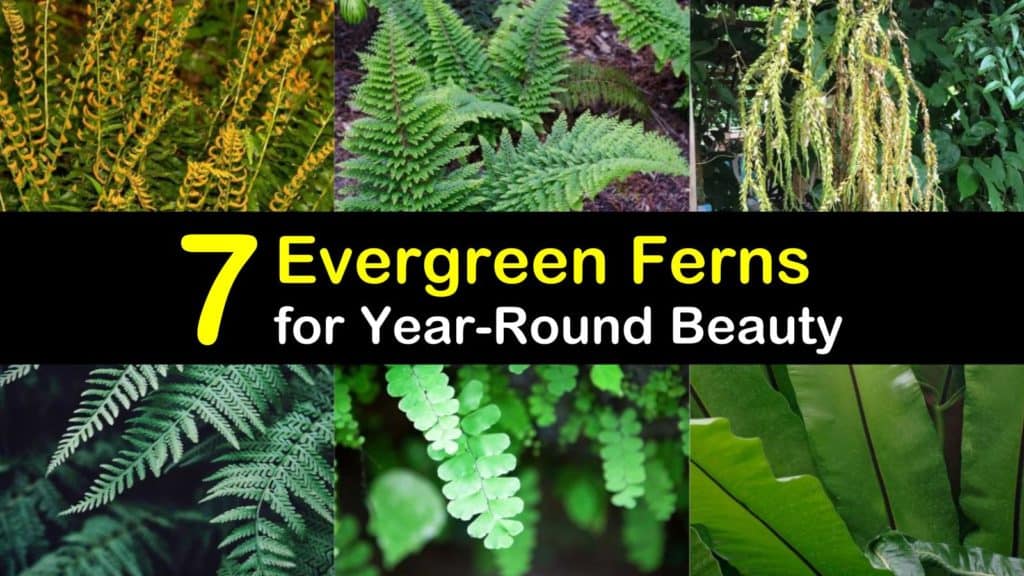
- Stunning Ferns for Winter Months
- Japanese Shield Fern (Dryopteris erythrosora) – Basic Evergreen Ferns
- Christmas Fern (Polystichum acrostichoides)
- Lady Fern (Athyrium filix-femina)
- Evergreen Fern for Hanging Baskets: Tassel Fern (Polystichum polyblepharum)
- Maidenhair Fern (Adiantum capillus-veneris)
- Japanese Painted Fern (Athyrium niponicum)
- Bird’s Nest Fern (Asplenium nidus) – Unique-Shaped Evergreens
Stunning Ferns for Winter Months
Not only is it a good idea to grow evergreen trees and perennial plants for year-round interest and color, consider adding ferns to the landscape to create an eye-catching array of feathery fronds.
Ferns do not have flowers and reproduce by emitting spores. They typically have deep roots and a rhizome, meaning the plants send out horizontal stems that help new fronds grow. Evergreen ferns are perfect for shade gardens or any other areas with full shade.
They are slow-growing, taking several years to mature in size and require regular watering. Prepare the soil with organic matter such as compost, dried leaves, or cut grass.
The leathery leaves protect them from nearly all fungus and pests, aside from an occasional slug attack. They make excellent companion plants with hostas, bleeding hearts, and phlox and are deer resistant.

Divide or transplant ferns in the early spring and watch them thrive for years to come. Here’s a fun fact – evergreen ferns are either male or female. If the area lacks a male fern, some species of females can turn into males.
Japanese Shield Fern (Dryopteris erythrosora) – Basic Evergreen Ferns
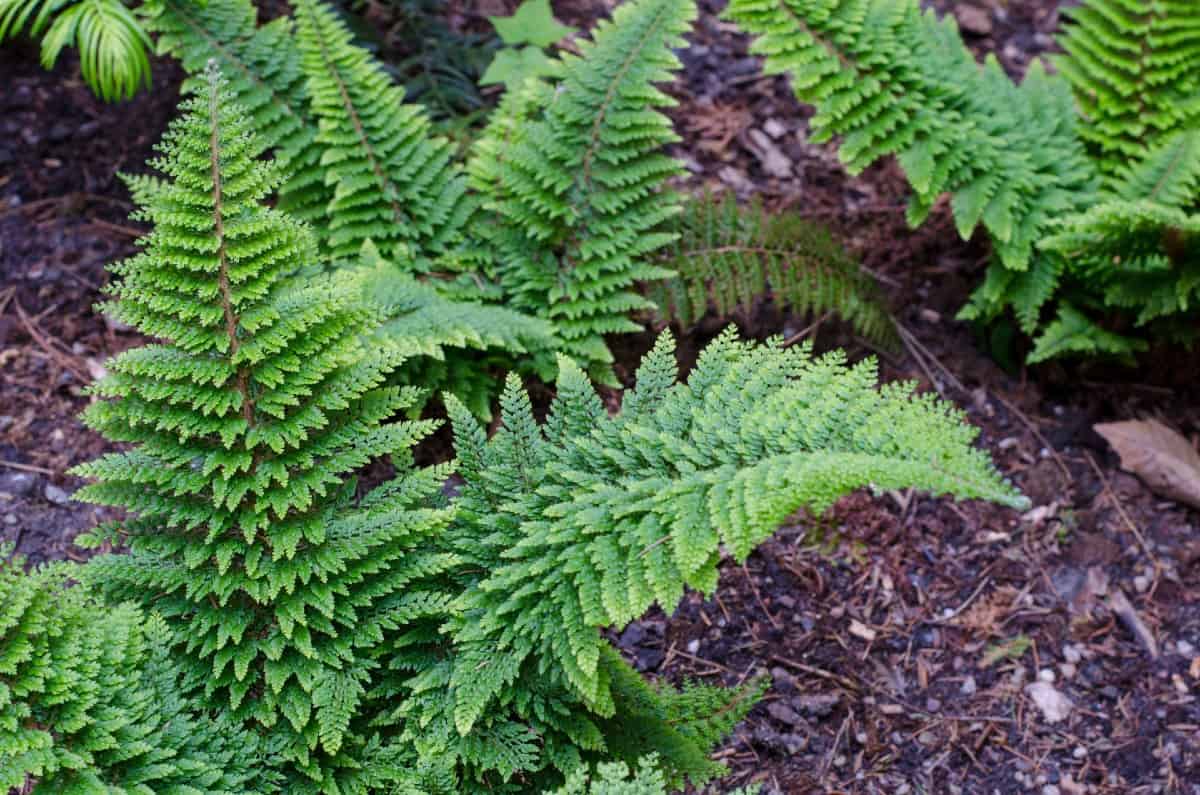
The Japanese shield fern, also called a wood fern, is one of the most common types of evergreen ferns. These are non-fussy plants that add tons of texture and color to your shade gardens.
Like the autumn fern, some varieties have new growth that emerges with coppery tones and turns red and purple in the fall. Red spores form on the bottom for even more color. Plant shield ferns in moist, well-drained soil.
Fertilize the soil once a year with organic matter or just before planting. Because they are slow-growing, buying the largest size affordable offers immediate beauty. For similar-looking evergreen ferns, try planting a Japanese holly fern or Cyrtomium falcatum.
Christmas Fern (Polystichum acrostichoides)
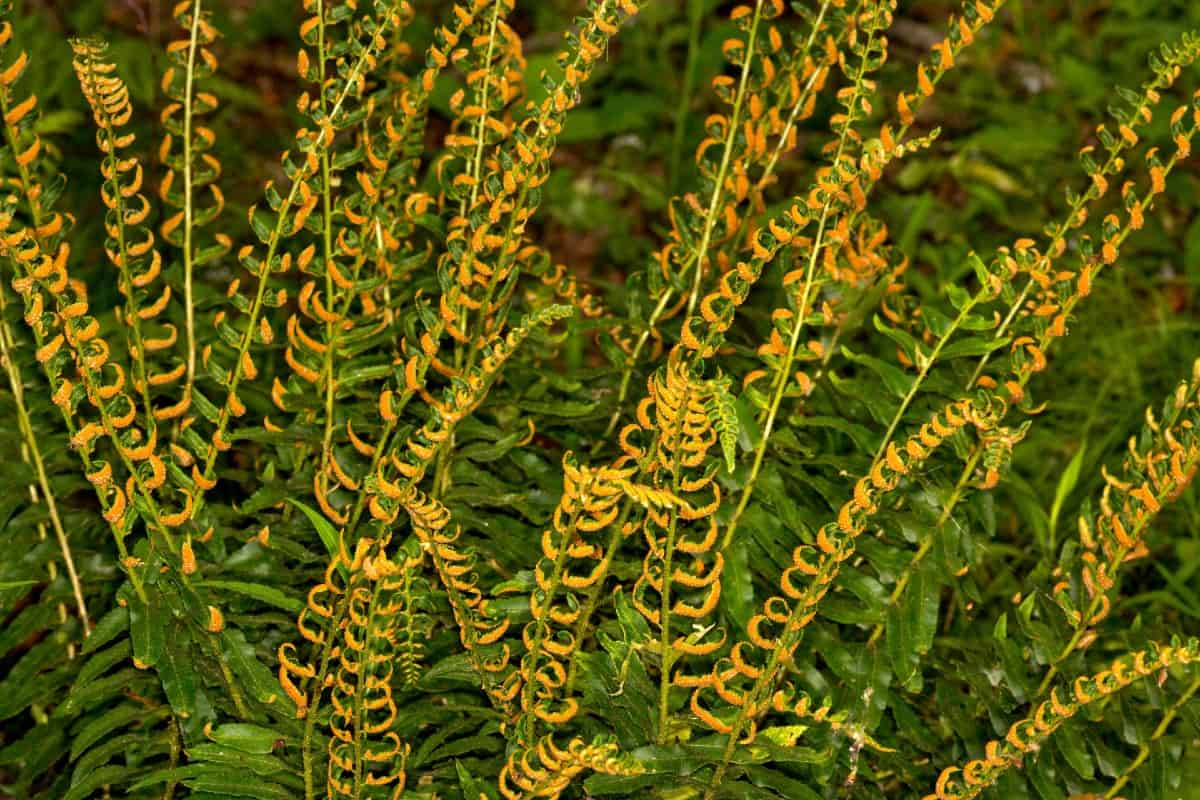
Christmas ferns are hardy in USDA zones three through nine and are named based on their ability to keep their dark green leaves all year long. The fronds of these colorful ferns reach up to three feet long and spread four inches wide.
When other plants are dormant, this plant brings a little bit of color. Christmas ferns prefer full to part shade but will tolerate a small amount of sunlight. Place them in well-drained soil fertilized with organic matter.
Plant them at least 18 inches apart after the last frost in the early spring. Sword ferns are another fern of the same species that looks similar if you can’t find a Christmas fern at your local greenhouse.
Lady Fern (Athyrium filix-femina)
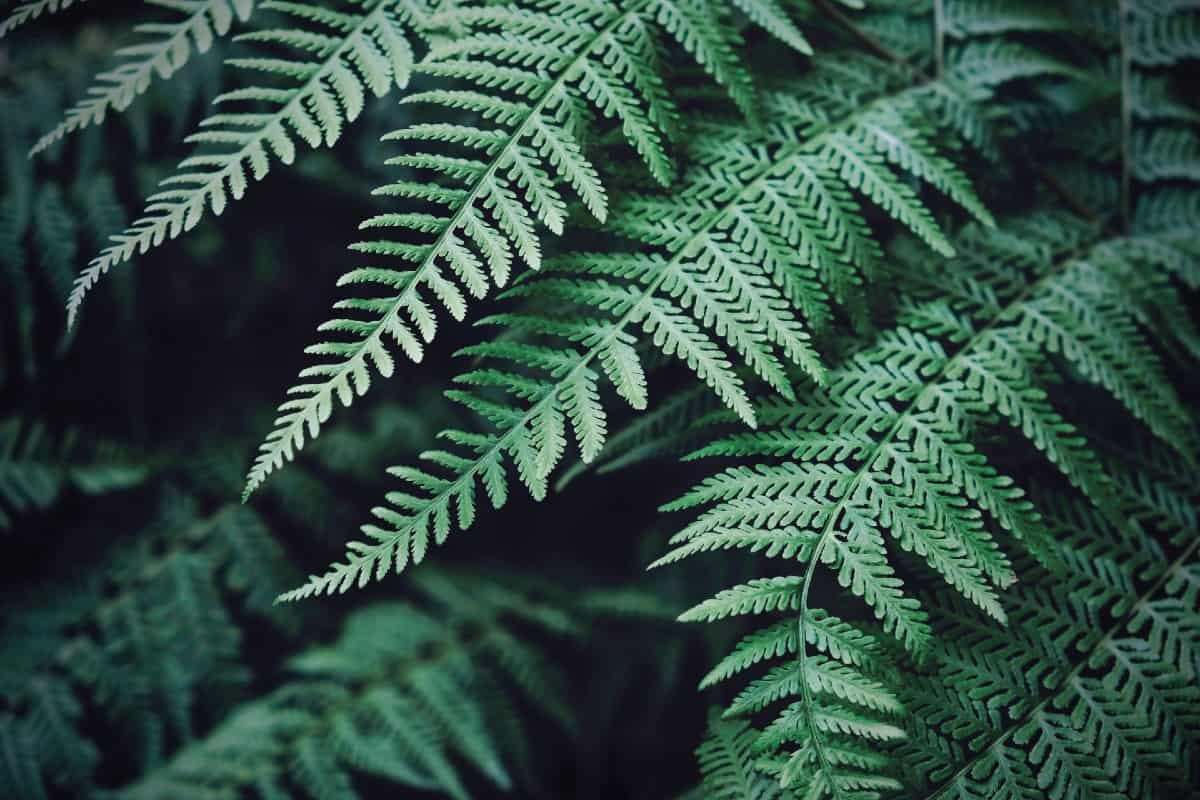
Lady ferns are native ferns with finely textured, light green foliage. Finding the perfect spot for these evergreen ferns is essential. Lady ferns prefer lightly shaded areas with part sun throughout the year. They thrive in well-draining, slightly acidic soil.
Add some of these attractive ferns beneath trees that bloom in winter or have attractive cold-weather foliage for interest at eye-level, as well as above and below.
When planted in the right place, they are some of the fastest spreading ground cover plants around. Growing these eye-catching ferns from the spores can be a painstaking process, however.
Instead, purchase a lady fern at a greenhouse or use the rhizome to begin the growth process. Divide them in the early spring and regularly water them. Another fern species similar to these is Osmunda regalis or royal fern.
Evergreen Fern for Hanging Baskets: Tassel Fern (Polystichum polyblepharum)
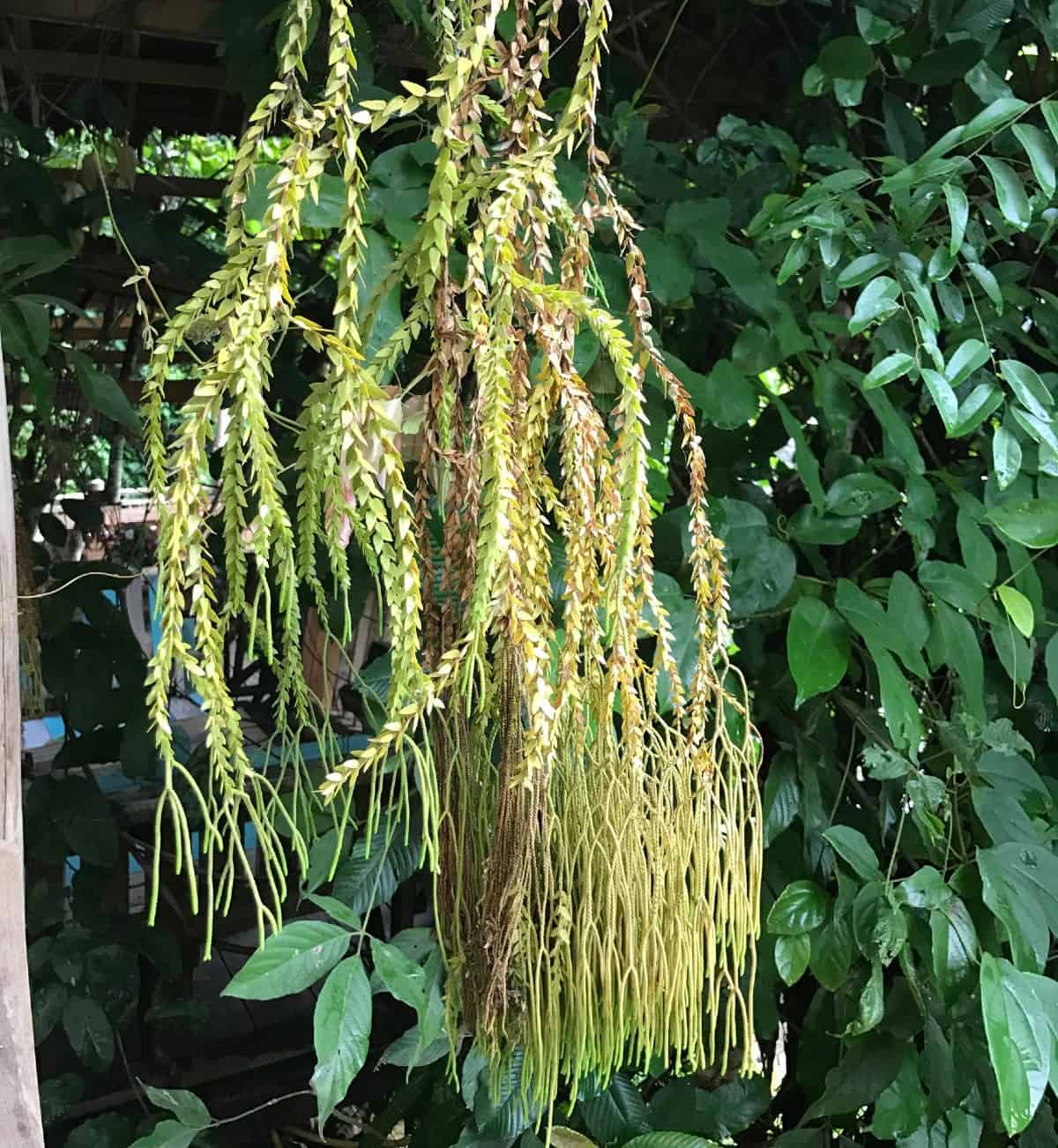
One of the most unique looking evergreen ferns in the tassel fern. New fronds begin by growing stiffly upwards, then droop down,looking fabulous in a hanging basket, but it can also be a groundcover plant. The arching, glossy fronds grow two feet tall and ten inches wide.
Tassel ferns are hardy in zones five through eight. Place individual plants about 30 inches apart in partial to full shade and soil with a pH range of four through seven. Apply three inches of mulch around the roots to protect the plant.
Maidenhair Fern (Adiantum capillus-veneris)
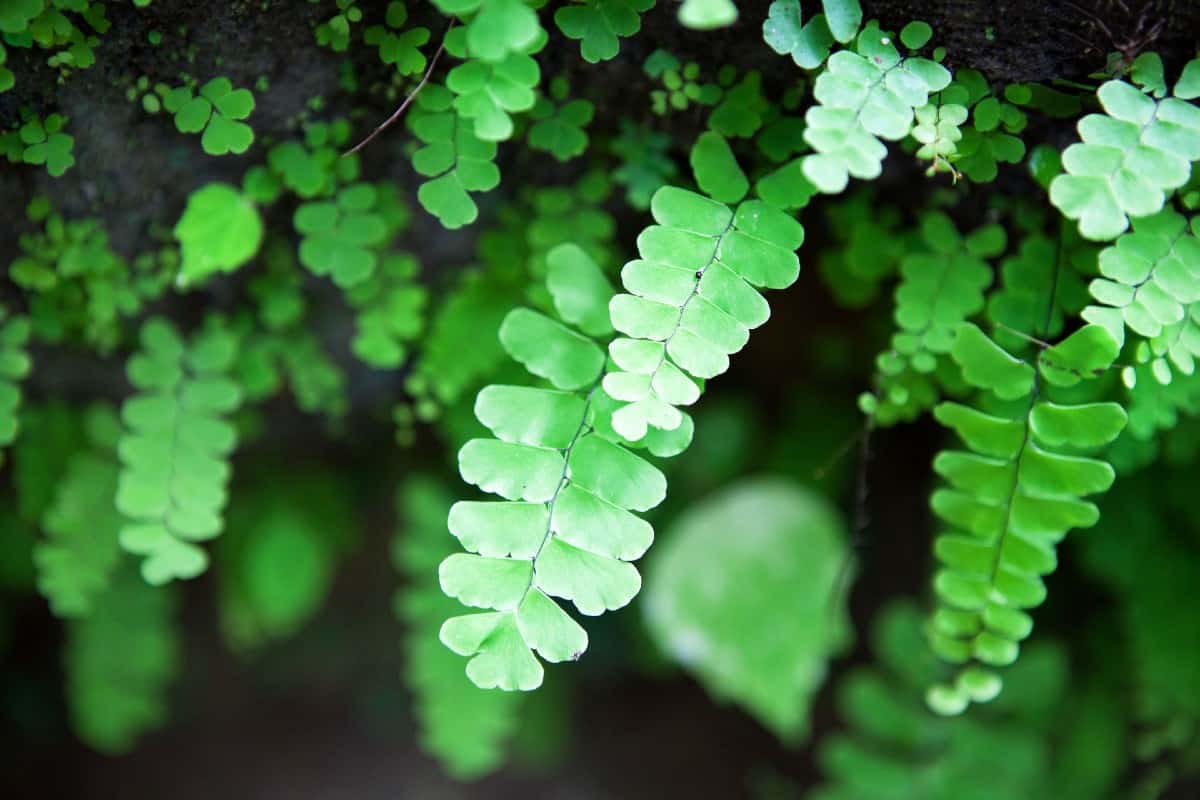
Maidenhair ferns have a reputation for being difficult, but that’s not true. As long as these plants have plenty of water, they should thrive in your home garden. The fan-shaped leaves add unique texture compared to many generic ferns, like the ostrich fern.
It is common for a few fronds to die back and new fronds will eventually grow to replace the old ones. Be careful not to overwater maidenhair ferns, or they may develop root rot.
If the soil dries out, give it a good soak of water, and it should help bring your plant back to a happy state. Provide partial to full shade and more alkaline soil.
Japanese Painted Fern (Athyrium niponicum)
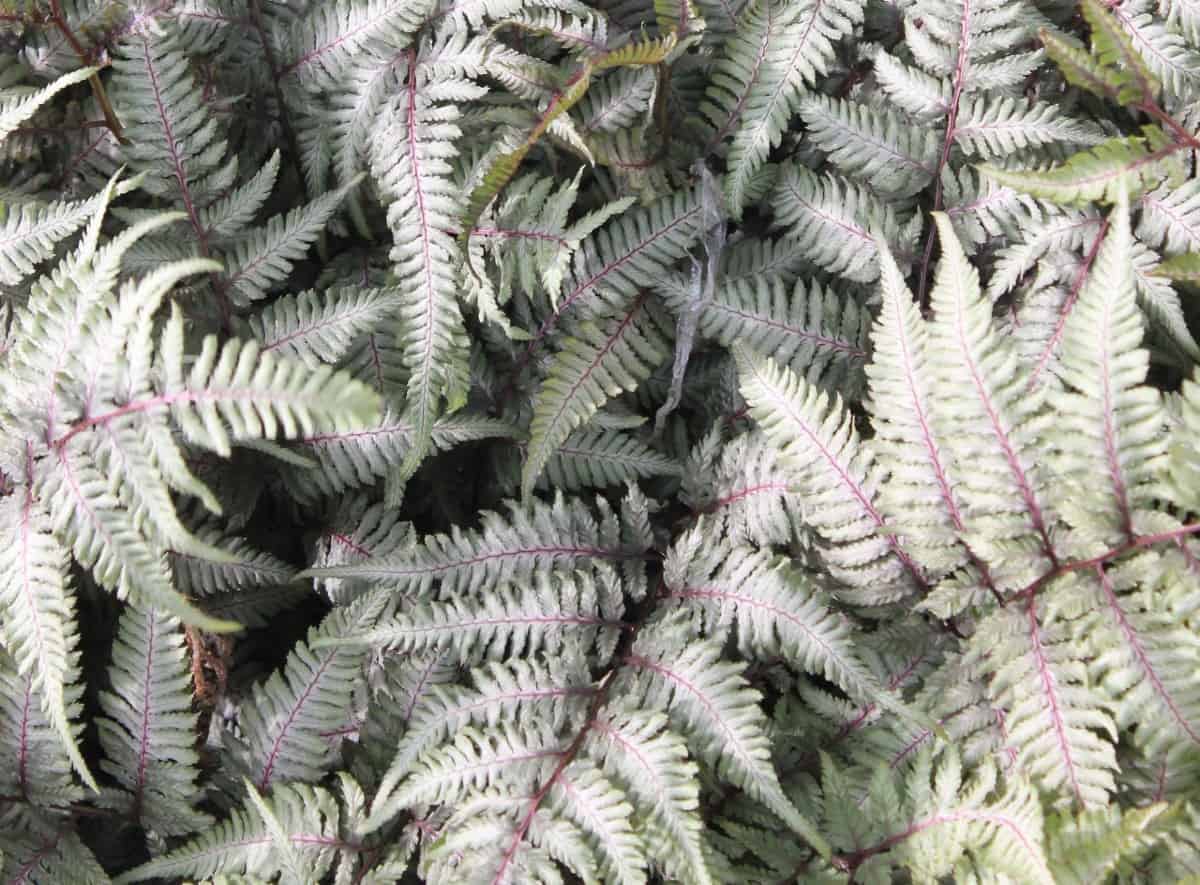
The Japanese painted fern is one of our favorites because of its silver foliage. These dramatic and colorful ferns are perfect for flower beds in full to partial shade, and they make excellent plants for borders and controlling areas prone to erosion.
Limit the amount of fertilization you give these plants. If the area receives any sun, make sure it only gets some morning sunlight with shade during the remainder of the day. Under the right conditions, the Japanese painted fern grows up to 18 inches high.
Bird’s Nest Fern (Asplenium nidus) – Unique-Shaped Evergreens
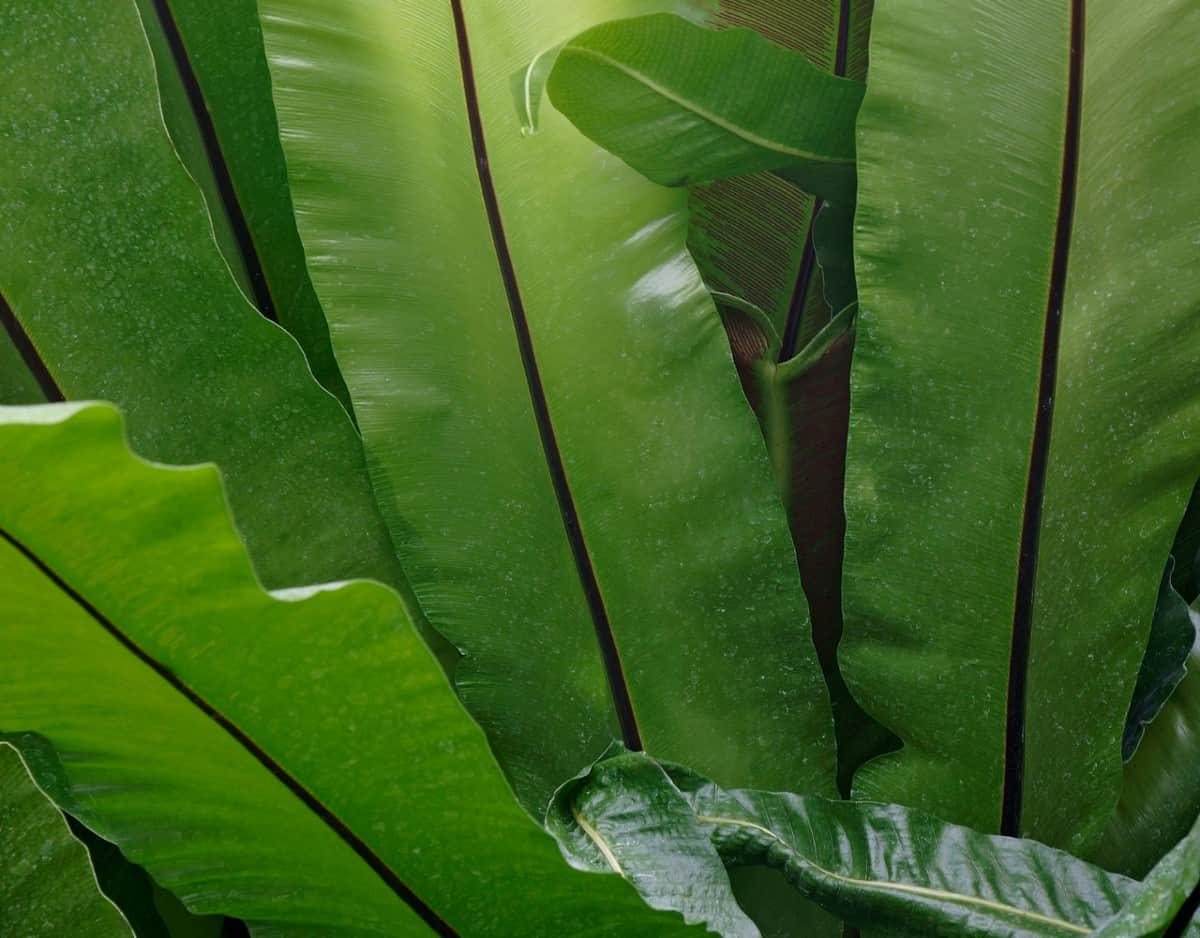
The bird’s nest fern has banana-like leaves and is native to southeast Asia, Australia, and Hawaii. Their feathery, wavy leaves make this fern stand out among its relatives, making it a fan-favorite for gardeners.
Plant the bird’s nest fern in indirect, medium to low light. The more sun these sun tolerant ferns receive, the more crinkly the leaves are. However, too much light and heat cause the greenery to yellow and die. This fern prefers moist soil but also survives if it dries out from time to time.
Finding the perfect evergreen ferns means your home is surrounded by colors and textures that stand out throughout the winter.
The leaves of ferns come in various shapes and sizes and are used for different purposes, such as container planting or for areas that need groundcover. We hope this article sparks some inspiration with exciting options that keep your home full of color year-round.
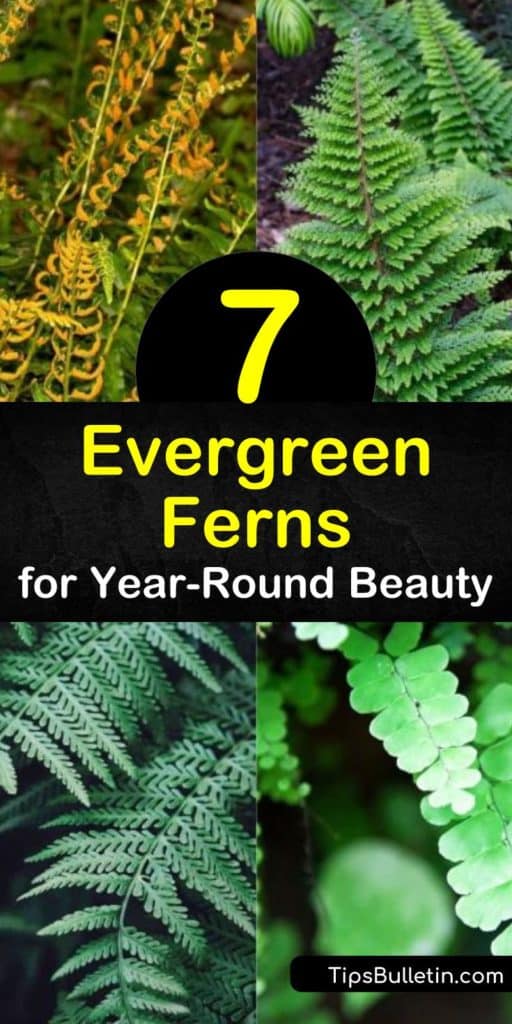
If these evergreen ferns stood out to you, feel free to share this list of ferns that live year-round on Facebook and Pinterest with friends and family.